#golden ibex
Explore tagged Tumblr posts
Text
We’ve all heard that thing about how the first sign of civilization was a broken leg but I just need to go on about something real quick.
Can we take a moment to talk about the golden ibex from Akrotiri???
For background archaeologists found this golden ibex in the ruins of Akrotiri on modern Santorini:

And like it’s cool and all but the thing about this statue that makes me go mad is ibex aren’t native to Santorini. This has made archaeologists think that it was either used for religious reasons or it was a gift (I like to think the latter and so that’s what I’m gonna be talking about)
This statue was found hidden in a little box stored for safe keeping.
There are basically no human remains in Akrotiri. Wanna know why?
They all ran away. They all tried to escape. Why?
Because the island was about to experience one of the biggest volcanic eruptions of the Ancient world so everyone took what they needed and left.
They all left and hoped that they’d come back.
And in my mind someone was given this ibex as a gift and maybe they treasured it. Then they had to leave so they placed it in a box where they thought it would be safe.
Then they left and never came back.
Someone tried so hard to keep this ibex safe maybe because they had to or maybe because they treasured it for whatever reason. Someone out there, someone lost to time, said goodbye and hoped they would see this statute again.
I like to think the golden ibex meant something to someone whether it’s because the thought restores my faith in humanity now or because it means that, at our cores, we’ve never truly changed. And frankly I just wish that whoever hid that ibex all those centuries ago would know that even though they themselves are forgotten they achieved their goal. They did it and the ibex that they might have loved is still loved by people today (aka me).
#This is like entirely my interpretation#I’m not an expert#But like he’s such a cute lil guy#Anyway#my faith in humanity really needs restoring lol#my ramblings#golden ibex#akrotiri#archaeology#ancient history#humanity#faith in humanity#so yeah
410 notes
·
View notes
Text
before voting, spin the wheel to get a friends at the table character
i kept it to main seasons and pcs only but there's still over 80 entries so if you don't know who someone is, look them up! or vote based on vibes! whatever u feel like <3
also pls reblog and tag who u got and how u voted im nosy
#friends at the table#f@tt#theres one bonus entry on here who isnt a player character if u get them u win a special prize <3#i got ibex btw. second best kisser in the golden branch i am fucking that old man
260 notes
·
View notes
Text

#do you think orth knew ibex was the second best kisser in the golden branch#friends at the table#counter/weight#fatt#f@tt#ibex#marcusart
315 notes
·
View notes
Text

My photography, please leave credit. :)
#autumn#fall#gray day#colorful#trees#leaves#golden#ibex#animal#chilling#idyllic#nature#original photography#mine#calm#cloudy#gray sky
18 notes
·
View notes
Text
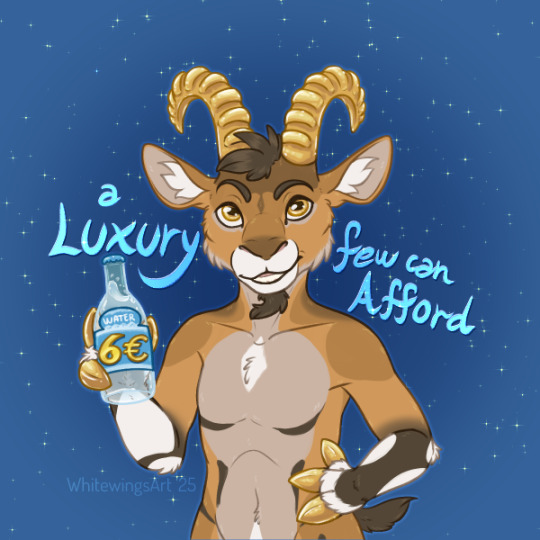
Special design for some inside joke merch I'll at my table during the next GoldenHorn~
#I'm a luxury few can afford#digital art#fanart#gw2#my art#golden#whitewingsart#2025#ibex#goat#anthro#water bottle
1 note
·
View note
Note
Are there any animals from Earth that you'd think would be fun to see on Pandora? Extinct or not, just for fun
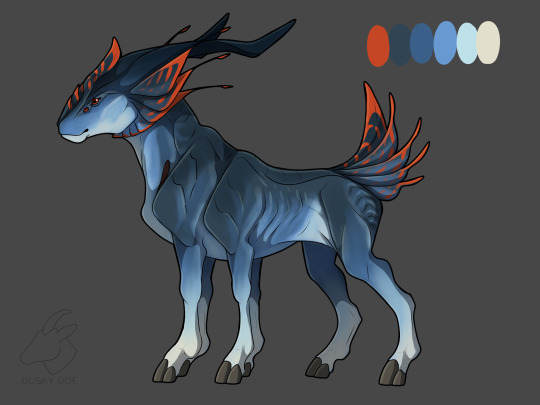
Some kinda Caprinae (wild goat/sheep etc) analogue for sure!! We didn't get to see much of the mountain biome beyond the ikran rookery, but i'm sure there's some terrestrial creatures bouncing around up there if the na'vi can get there from the ground. Maybe the ikran would even hunt these guys in a similar way that golden eagles sometimes hunt chamois and ibex!
I also just really like goats, and I think the pandoran ecosystem could do with more mid-sized herbivores :)
#avatar pandora#avatar movies#avatar movie#avatar#avatar 2009#pandora avatar#pandora#asks#digital art#digital painting#my art#duskys art
55 notes
·
View notes
Text
⊹⠀⠀DRAGONS IN KHORĀSHEM AND THE ATHYAN INFLUENCE.
in most modern narbaradi languages, dragons are called vazhdrük. the most common word for dragons in ancient times, vazh, originally meant only snake, a meaning which is still used to this day. most people know very little about the ancient dragons that used to roam around the seas and skies in the early years of creation as they have now disappeared, but it used to be said that at the time of pre - narbaradi unity, the people must have imagined dragons restraining the waters and causing drought and not releasing them until slain by a god or hero, as in the zaryan - khel (a race of desert mountains and ancient citadels, known for their mastery of fire - based magic) myth of jahanzeb and nazheen.
in most narbaradi literature, however, other than dûzhak who lives in the zharûn sea, dragons are rarely mentioned in connection with water, though they are sometimes said to dwell by rivers. the spirit which causes drought seems not to be a dragon. instead, the dragons, materially huge monsters with ravenous appetites, have been given their place in the order of the world. before the gods rose to dominance, the dragons were said to worship their own forgotten deities. the greatest of these was zharvak the world - serpent, a primordial dragon whose coiled body was believed to form the foundations of the earth. some scholars claim that the first dragons were not mere beasts but fragments of zharvak’s shed scales, each carrying a sliver of his divine essence. when the gods arose, they warred against the draconic pantheon, casting them down into the abyss or binding them beneath mountains.
the zharûn sea, where dûzhak dwells, is rumored to be the prison of one such fallen draconic god, its waters boiling where its heart still beats.
dragons in narbarad, unlike their counterparts in different regions, share physical similarities with zaetian dragons. their forms are sinuous, more serpent like, with undulating, graceful movements. yet they possess the regal presence of a lion, with powerful shoulders and a broad chest. some have two forelimbs, ending in curved, raptor like talons. others are entirely limbless, moving like flowing rivers in flight. like the dragons of zaetian art, they have long, flowing tendrils from their jaws, sometimes resembling a wise elder’s beard, other times crackling with lightning or smoke. unlike leathery dragons, their wings are vast and semi translucent, like stained glass or peacock feathers, catching the light in iridescent hues. some vazhdrük do not have physical wings at all. some have curving, spiral horns, resembling those of persian ibex or qilin, frame their elongated faces. some have multiple horns.
their pupils are vertical slits, but the sclera shifts color: gold for wrath, blue for sorrow, green for amusement.
TYPES OF DRAGONS: it all began with the true dragons.
first there were the stormsingers, vorynd’s kin. they had long, serpentine bodies with feathered wings that crackle with lightning. their scales shift between cobalt and silver. their voice can summon hurricanes and their blood, at the moment, is used by the daryan energy mages. most were slain for their storm - binding hearts, used to control weather. only vorynd remains.
the silent ones, khalzûn’s kin. they are limbless, obsidian - scaled and had golden scars where words were carved into their flesh. no mouths: they speak through visions. they had the ability to absorb sound, memory and even time in their vicinity. the last, khalzûn, waits on qaf.
the tidebreakers, dûzhak’s kin. they are massive, fin - winged leviathans with bioluminescent veins. coral grows from their hides. they can manipulate currents. most were hunted for their pearl - encrusted bones. only dûzhak lingers in the zharûn sea.
the flamedancers, ninetya’s kin, extinct. they're ruby - scaled with wings of living fire. their bodies emit no heat until they choose to burn. they breath weapon is "storyfire", flames that force victims to relive their worst memories. their hearts were said to grant immortality (a lie spread by athyan hunters). all were slain. the last, ninetya, died singing a lullaby to her killer.
after their creation, lesser dragons came into the picture.
the bone puppets, undead dragons. they were reanimated by athyan necromancers using dragonbone rituals. they are hollow - eyed and can mimic the voices of those they killed. true death requires erasing their name from the silent archive.
the eclipse wyrms, parasitic spirits. born from solar eclipses, these are not true dragons but shadows that wear dragon - skin. their bodies flicker between solid and smoke. they cannot cross mirrored water.
the last are the cursed dragons, who were transformed by divine wrath or their own sins.
the goldscaled, athyans who became dragons. those who consumed too many dragon hearts underwent horrific metamorphosis. they have half - human faces, molten - gold blood and their wings are brittle and glass - like. most went mad, now lurking in ruined cities.
the chainbound, dragons who served the gods. enslaved by deities, they are now bound with divine iron collars. the collars suppress their will, turning them into living siege weapons. the last known, zahariel, was freed by khalzûn and now haunts battlefields.
the hollow ones, vashkhor’s legacy. lastly, dragons whose hearts were stolen but bodies lived on. they have empty chest cavities and are drawn to places of mass death.
SYMBOLISM OF DRAGON - SLAYING. while untrue, dragons in narbaradi mythology are a destructive demoniacal force. one theory links the legends with solar and lunar eclipses and with lunar waxing and waning, which lay at the root of moon worship. the popular explanation for these phenomena was that a dragon comes up from the hels every month on the eastern side of the sky and swallows a piece of the moon’s disc every night until the night comes when no part of the moon can be seen. then the moon - god kills the dragon from inside its belly and triumphantly reemerges. in later times, however, the sun took over the moon’s role in the celestial combats and it was the sun which slew the dragon and rescued the moon from the dragon’s belly twelve times every year. later still the celestial combats were brought down to earth.
the sun - god or god of light was replaced by a hero and the belief in the dragon’s swallowing of the moon was transformed into the myth of the dragon’s swallowing of a maiden. compared to many things in narbarad, however, dragon slaying has lost its mythico religious importance. in the national legends this development is carried much further, to the point where the theme of dragon slaying has nothing whatever to do with service to religion and becomes an instrument of royal or heroic ideology. thus in the legends it comes first among the marvels and bold feats required as proofs of the king’s or hero’s legitimacy. when the dragons used to roam around freely, it was the model for kings that they should demonstrate the legitimacy of their status by slaying a dragon.
though dragon slaying became a symbol of kingship, not all saw the creatures as mere monsters to be destroyed. secret cults persisted, especially among the athyans and certain coastal tribes, who believed that dragons were the true first rulers of the world. the most infamous of these was the cult of the everwing, which taught that the last dragons did not flee to mount qaf but instead entered a state of "scaled slumber", buried deep beneath the earth. these cultists perform rituals with dragon bones, seeking to awaken their sleeping lords. some even claim that the athyans’ hunger for dragon hearts was not mere greed but a desperate attempt to keep the dragons’ power alive within mortal veins, lest it fade from the world entirely.
"when a snake lives a century and its length becomes thirty gazes, it is called a vazhdrük. because of their ferocity to other creatures, the gods eventually throw them into the sea and it is there where their bodies continue to grow, such that their length becomes more than ten thousand gazes. in the sea they evolve to have two wings and the waves of the sea are due to their movements. eating the heart of a vazhdrük brings courage and bravery. their skins are suitable for healing the wound of love and if someone buries their head in soil, the condition of that soil will become good." — anahit davtyan, known nature philosopher (kensagir in masisyani or dânâmeshîn in zoryani) of narbarad.
because of this text, the athyans came into place. they were once a noble race born from the covenant between ancient dragons and mortals. according to legend, the first athyans were forged when dragons shed their blood into the veins of chosen warriors, gifting them scales of molten bronze and ember - lit eyes capable of detecting lies. for centuries they served as dragon riders, scholars and the bridge between reerakind and the monstrous. and as beings already connected to the dragons, they felt their power diminishing as they watched both humans and reera alike kill them. as twisted as it may sound, they found a solution. they too, shall kill as many dragons as they see and will eventually eat their hearts to strengthen their magic and physical bodies, especially their wings.
the first murder started with vashkhor the hollow, who slew his bonded dragon azhrîndar and devoured its still - beating heart. dragon hunts began in secret, then openly. athyan clans turned on one another, each claiming the "last heart" for themselves. the last two dragons were almost butchered in their sleep, but legend said they disappeared into thin air. it is found out centuries later, by shams, that they have reached mount qaf and reside there peacefully. the two dragons that escaped were azhrîndar’s kin, vorynd and khalzûn. legends say they did not flee out of fear but to enact a final vengeance. unbeknownst to many, however, there are still dragons hiding in narbarad itself, but they are in location many dare not seek.
#yeah....... yeahhhhhh#who wants me#i wanted to go into mount qaf but i think that deserves its own post#so soon <3#anyway!#⅋̳.⠀ ﹝⠀ headcanon. ⠀﹞ and the violence of men was not dear to me‚ but the voice of the wind i could understand.#if this flops i'm reblogging this again you will be subjected to this
20 notes
·
View notes
Photo

(4/54) “My father named me Parviz, after one of Iran’s ancient kings. His story comes at the end of Shahnameh, in the historical section. Parviz was a good king. Not a great king, but a good king. His reign was a golden age of music. But he made many mistakes. His grandson Yazdegerd would be the last king of the Persian Empire. Every day on the way home from school I’d pass by the ruins of an ancient castle, where he made his final stand against the armies of Islam in 642 AD. The Battle of Nahavand was the bloodiest defeat in the history of our country. Most days when I got home I’d go straight to my room and read Shahnameh. The book opens in myth: our oldest stories, from before the written word. But the poets say our myths are even truer than our history. They emerge from the collective psyche. They hold our dreams. They hold our ideals. When Ferdowsi writes about our mythic heroes, he writes about all of us. And in Shahnameh there is no greater hero than Rostam. The Heart of Iran. A knight with the height of a cypress. And a voice to make, the hardened hearts of warriors quake. At one point in Shahnameh Iran is on the brink of defeat. Three enemy kings have joined their forces. Our armies are almost beaten. Rostam arrives at the battlefield on foot: no horse, no armor, carrying nothing but a bow and arrow. And with a single shot he slays the greatest champion of the other side. I wanted to be Rostam. My brother and I built a gym behind our garden. We took the heads off of shovels and made parallel bars. We made barbells out of clumps of dirt. We’d wrestle sixty times a day. And while we wrestled my brother’s friend would beat a drum and chant our favorite verses about Rostam: his defeat of the demon king, his battle with the dragon. There were no dragons in Nahavand, but there were ibex. They only lived at the highest elevations. And they were beautiful with their horns. I’d climb all night. I’d make my way by moonlight. The cliffs were covered in ice, a single slip could mean death. But I’d reach the summit by dawn, and watch the sun come up on herds of ibex grazing on the peaks.”
پدرم مرا «پرویز» نام نهاد - به نام یکی از پادشاهان ساسانی. داستان خسرو پرویز در بخش تاریخی شاهنامه میآید. او شاه بدی نبود ولی در کار فرمانروایی لغزشهایی بدفرجام داشت. پادشاهی او دوران طلایی موسیقی بود. نوهاش یزدگرد سوم پادشاه سالهای پایانی شاهنشاهی ساسانی بود. روزانه، در راه مدرسه به خانه، از نزدیک ویرانهی کاخی باستانی میگذشتم که جایگاه شکست یزدگرد سوم از سپاه اسلام در سال ۶۴۲ میلادی بود. نبرد نهاوند بدفرجامترین شکست تاریخ ماست. همینکه به خانه میرسیدم، بیدرنگ به اتاقم میرفتم و شاهنامه میخواندم. کتاب با اسطورهها آغاز میشود: کهنترین داستانهای ما، از دوران پیش از نوشتار. برخی میگویند که افسانههای ما از تاریخمان هم راستینترند. آنها از روان گروهیمان برخاستهاند. دربرگیرندهی آرزوها و آرمانهای ما هستند. هنگامی که فردوسی از پهلوانان افسانهای ایران میسراید، دربارهی همهی ما مینویسد. و در شاهنامه پهلوانی والاتر از رستم نیست. قلب تپندهی ایران. پهلوانی بالابلندتر و نیرومندتر از همه. به بالای او در جهان مرد نیست / به گیتی کس او را همآورد نیست. با صدایی که دلهای استوار جنگجویان را به لرزه میانداخت. در بخشی از شاهنامه، ایران در آستانهی شکست است. سپاه سه کشور به هم پیوستهاند. رستم پیاده به آوردگاه میرسد: بی اسب، بی جنگافزار، تنها با دو تیر و کمانش. اسب و سردار نیرومند سپاه دشمن را از پای در میآورد. میخواستم رستم باشم. من و برادرم زورخانهای پشت باغچهمان ساخته بودیم. دستهبیلها را جدا کرده و با دستهها میلههای موازی (پارالِل) برپا کردیم. هالتر را از دسته بیل و گِل رُس تهیه کردیم. ما هر روز تا شصت بار کُشتی میگرفتیم. هنگام کشتی، دوست برادرم طبل مینواخت و شعرهای موردعلاقهمان را دربارهی رستم میخواند: شکست دادن دیوان، نبرد او با اژدهای پیدا و پنهان. در نهاوند اژدهایی نبود، ولی کَل و بزهای کوهی بودند. شاخهایشان چه زیبا و شکوهمند بود. بر بلندترین قلهها میزیستند. تمام شب را از کوه بالا میرفتم. مسیرم را با روشنایی مهتاب مییافتم. گاه تختهسنگها از یخ پوشیده بودند، اندک لغزشی میتوانست مرگبار باشد. ولی پیش از سپیدهدم خود را به قله میرساندم، و به تماشای تابش آفتاب بر گلهی بزهای کوهی که سرگرم جست و خیز و چرا بودند، مینشستم
296 notes
·
View notes
Text
(This post is brought to you by yours truly marathoning the back catalogue of Friends at the Table, and is therefore full of spoilers up to COUNTER/Weight ep 26: "Do you have room for me?" INCLUDING the final reveal)
Counter/weight 26 is WILD. I mean, I've generally been listening to the whole series with both fists stuffed in my mouth, but THIS EPISODE is just over an hour long, including the wrap-up, *what the fuck*
The introductory narration from "Dr Jace Rethal"??? When does Jace: a) wake up; b) get his PhD; c) research this book about what went on inside Mako's literal brain?
Mako is taken over by Larry the Antivirus? And in the process discovers that he's secretly running on Righteousness? And then invites Larry to hang around?
AuDy is... where do I even start?
AUSTIN: "Uh... which arm do you wanna lose?" JACK: Oh, the one without the shotgun in it. KEITH: I’m sorry, why did you lose an arm? AUSTIN: Cause he tried to climb a *sword*!
- Then this:
AUSTIN: (low and ominous) Let me break a thing. Let me break a thing. ... Fuckin’ let me do it. KEITH: If Austin is excited to break a thing, you cannot let him do it. AUSTIN: Fuckin’ let me break – Jack. Please let me break this thing. JACK: Alright. ... AUSTIN: Nice. KEITH: I’m very upset. ALI: It’s probably fine. KEITH: It’s never *once* been fine.
AND THEN Ibex's ship teleports right on top of their head? AND THEN, what Austin breaks is AuDy's anti-network firewall? and:
AUSTIN: This isn’t the first time you’ve been online, AuDy. And it really rushes back to you. A looooong time ago, before you knew there was the Golden Branch sector. JACK: As I was being manufactured? AUSTIN: No… well, I guess someone built you. We haven’t quite figured out how they build Divines yet.
#friends at the table#f@tt#counter/weight#i guess i should make a reaction tag at this point#vic listens to f@tt
71 notes
·
View notes
Text
Happy Secret Samol to everyone, but especially @ringneckedpheasant, the person this song is for!
I was inspired by your prompts to write a Kingdom game era Orth and Ibex duet.
Huge thanks to @nvrlernd2-reid, who performs the part of Ibex on this track!!!
Lyrics below the cut.
(I also made a youtube lyrics video so if that's your preferred place to listen to tunes you can check that out here.)
Orth's part is in plaintext, Ibex's is in italics, both is in bold
Captain of a sinking ship
Leader of a one way trip
Somebody’s pawn in somebody’s grand design
Blazing a golden trail
Too bad we’re all doomed to fail
And when we all die
The blame will be mine
I fly with the weight of the world on my shoulders
Give the weight to somebody who’s bolder, colder
Soldier you’re gonna be fine
I lied
Eldest of a dying breed
Brother called up to lead
Nobody’s pawn, not even a divine’s
This man is too sensitive
Enter, executive
I’ll lend a hand to steady his lacking spine
I fly with the weight of the world on my shoulders
What’s another minuscule boulder?
I told her that I would be fine
I’ve tried
Captain of a sinking ship (They love you in peacetime)
Leader of a one way trip (They need me in war)
Somebody’s pawn in somebody’s grand design (Don’t you forget what it is we’re fighting for)
Please, give me some advice (I’m happy to help you)
Guidance sure would be nice (I’m an excellent guide)
If only the stars could lend us their shine (What great things we can do side by side)
I fly with the weight of the world on my shoulders
Give the weight to somebody who’s bolder, colder
Soldier you’re gonna be fine
I lied
Captain of a sinking ship, leader of a one way trip
Somebody’s pawn in somebody’s grand design
#secret samol#secret samol 2023#friends at the table#counter/weight#fatt#f@tt#c/w#orth godlove#ibex#attar rose
140 notes
·
View notes
Note
What's the fauna of Greece like? I'm guessing there are a lot of reptiles and bovidae...
Bovidae not so much. Apart from the domestic ones of course which are plenty indeed, especially the goats, wild species of bovidae are only the alpine chamois and the endemic Cretan ibex. A notable yet domestic species is the water buffalo.
Other ungulates include the wild boar, the red deer, the fallow deer, and the roe deer. There are originally domestic horses which escaped or were abandoned by their owners and have now formed herds up in the mountains and have returned to a semi-wild state of being. There is also the Greek breed of the Skyrian horse, some small and delicate horses that are maybe slightly temperamental. Plenty of domestic donkeys and mules in Greece too.

A Cretan ibex and a Skyrian horse.
In Greece there are also the European rabbit and the European hare, the southern white-breasted hedgehog and the northern white-breasted hedgehog, the European mole, some ten species of shrew and around thirty species of rodents (squirrels, dormice, mice, rats and voles).
There are about 36 species of bats. Larger, carnivorous mammals found in Greece include the European wildcat, the Balkan lynx, the red fox, the golden jackal, the grey wolf, the Eurasian brown bear, the introduced American mink, the least weasel, the European polecat, the marbled polecat, the beech marten, the European pine marten, the European badger and the Eurasian otter. There used to be Eurasian beavers in Greece but they have gone extinct from the region, however there are efforts to reintroduce the animal to the country. Greek seas are the most significant habitat of the severely endangered Mediterranean monk seal, the only seal in the Mediterranean sea, because this is where it reproduces, so there is a national marine park specifically for its protection. There are also 15 species of dolphins, whales and porpoises, including sperm whales and orcas. The dolphin is Greece's national animal.
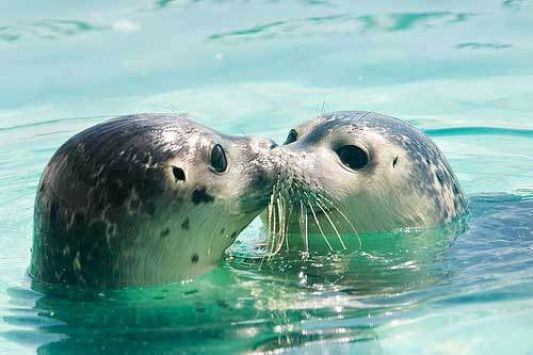
Mediteranean monk seals.
The most populus large animal community in Greece is by far the avian fauna. There is a total of 478 bird species, so I am not going to list them all. Greece is a very good destination for bird watching. It is a remaining habitat for several birds that have started disappearing from the rest of Europe. Some of its most notable birds are the flamingos, the Dalmatian pelicans, several eagles and falcons and at least three species of large vultures.

Dalmatian pelican, flamingo and vulture of Greece.
Now the reptiles, I don't know if they are considered many, more like so-so. There are 76 species of reptiles in Greece, most of them lizards but a lot of snakes as well. There are also three species of sea turtles and six more species of tortoises and pond turtles, including the endangered Caretta caretta loggerhead sea turtle which also reproduces almost exclusively in Greece so we have another national marine park for the protection of this turtle. Notable is the presence of two species of chameleons. In Greece, only the vipers are dangerous snakes. There are five species of vipers in the country, including the endemic Milos viper.

The characteristically brown Milos viper, the Mediterranean chameleon and the loggerhead sea turtle.
There are 26 species of amphibians, mostly frogs but several salamanders as well. Three of them are endemic; the Karpathos frog, the Cretan frog and the Karpathos salamander.
On the other hand, there are several freshwater fishes, namely around 160 species, of which at least 18 are endemic plus the entire Tropidophoxinellus genus which is also endemic in the country.
There are about 1101 species of insects and 145 species of arachnids. Arachnids present in Greece include the scorpion, the Mediterranean black widow and the Mediterranean recluse (brown spider), those three being the venomous ones that can be a danger to humans. There are tarantulas in Greece as well, but not any dangerous species. It's important to note that both in the arachnid case and in the vipers' case, they are generally not aggressive and reports of dangerous bites / stings are extremely super rare. Same with the orcas. They don't approach the shores and humans. Same with the brown bears. They don't attack humans. Sometimes they get into the villages of Grevena to find food and people stay inside their houses but I don' t think there's ever been an attack actually.
As for marine fishes, I couldn't find a conclusive source on how many they can possibly be but they are a lot obviously. There are sharks in Greece, including large ones, including actually the occasional passing by of the great white shark but they stay way in the open. There's never been any report of a healthy white shark nearing shallow waters and populated coastal places. On the contrary, dolphins show up all the time, it's always so exciting to see them. And the seals rarely even lounge on the beaches next to swimmers. Back to the fish, there are rays but also haven't heard anything happening. On the contrary, more frequent are the incidents of stepping on a scorpaena fish and that hurts like hell. There are also venomous jellyfish in Greece that present a danger, however I don't think they are dangerous for a human's life. But it will need a visit to the hospital. Here I won't talk about the incredibly stupid decision I made once that resulted in a large jellyfish lying flat on my face. Thankfully it was a saloufa, which is not venomous, because if it was I would probably be before Saint Peter's Gates now after such a full face contact. The TERROR of seeing a jellyfish lying flat on your face though...
19 notes
·
View notes
Text
WHAT IS BEYOND THE EDGE OF THE SOLAR SYSTEM??
Blog#383
Wednesday, March 13th, 2024.
Welcome back,
Earth is the sixth planet from the edge of the solar system, meaning we're none too near this cold and inhospitable frontier. But we've sent out various spacecraft over the years, so do we have any idea what the edge of the solar system looks like?
The answer is yes, but it's a work in progress. One of the latest developments, a 3D map of the solar system's edge that took 13 years to create, revealed a few more secrets about this mysterious boundary, called the outer heliosphere.
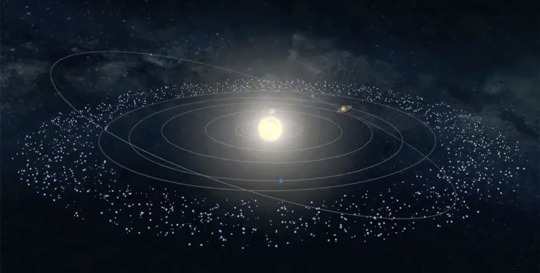
The outer heliosphere marks the region of space where the solar wind, or the stream of charged particles emitted from the sun, is "deflected and draped back" by the interstellar radiation that permeates the empty space beyond the solar system, said Dan Reisenfeld, a space science researcher at Los Alamos National Laboratory in New Mexico and head of the team that conducted the research on the 3D map. In other words, solar wind and interstellar particles meet and form a boundary at the far reaches of the solar system.

Earthlings first got a glimpse of the solar system's outer edge in 2012, when Voyager I, a NASA spacecraft that launched in 1977, crossed into interstellar space, according to NASA. Voyager 2 was not far behind, repeating the feat in 2018. Equipped with golden records full of Bach, Louis Armstrong and humpback whale songs, in addition to their scientific instruments, Voyagers 1 and 2 reported a sudden dropoff in solar particles and a substantial increase in galactic radiation when they left the solar system, according to NASA's Jet Propulsion Laboratory at the California Institute of Technology.

The new 3D map reveals even more about the heliosphere. The inner layer — where the sun and its planets are nestled — is roughly spherical and is thought to extend roughly 90 astronomical units (AU) in all directions. (One AU is the average distance between Earth and the sun, about 93 million miles, or 150 million kilometers.) The outer layer is much less symmetrical. In one direction — that in which the ever-moving sun plows through the space in front of it, encountering cosmic radiation — the outer heliosphere extends about 110 AU, but in the opposite direction, it's much longer, at least 350 AU, according to Reisenfeld.
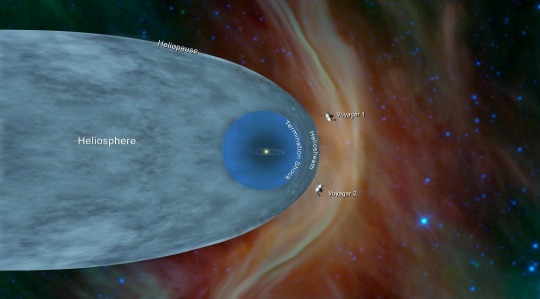
That lack of symmetry comes from the sun's movement through the Milky Way, as it experiences friction with the galactic radiation in front of it and clears out a space in its wake. "There's a lot of plasma [charged particles] in the interstellar medium, and… the inner heliosphere, which is pretty round, is an obstacle in this stream of plasma which is flowing past it," Reisenfeld told Live Science. "It has the same effect as water going around a rock in a stream," with a rush of water crashing into the rock in front and a sheltered calm behind it.
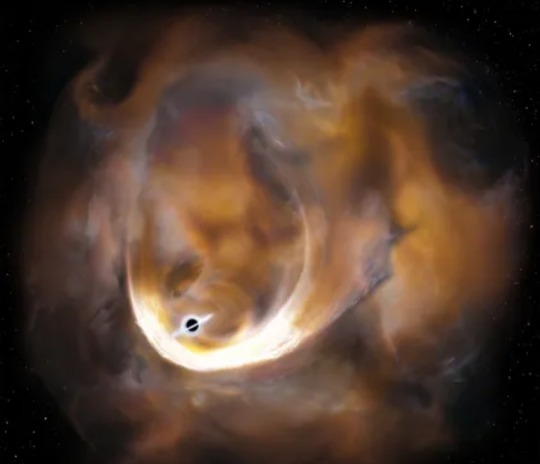
Measurements for the 3D map were gathered using the Interstellar Boundary Explorer (IBEX), which was launched in 2008 and is "the size of a bus tire," according to NASA. It's pronounced "like the animal," Reisenfeld said, referring to the ibex mountain goats known for their gravity-defying treks up alpine cliffs. But the animal that IBEX really takes after is the bat.
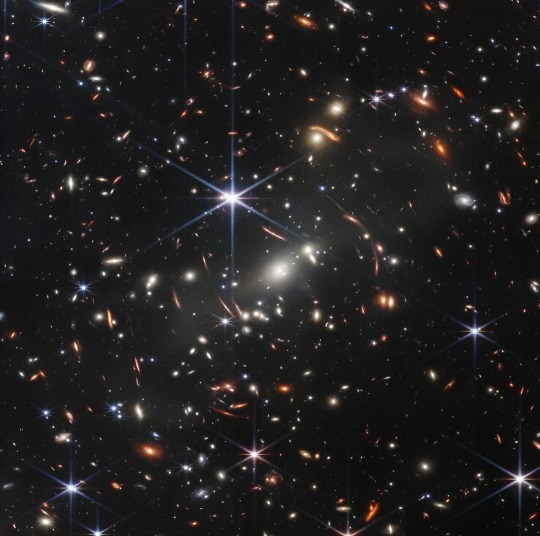
Many bats hunt insects, such as mosquitoes, by emitting a pulse of sound and using the time delay of the echo to figure out the distance to their prey. Likewise, IBEX detects solar-wind particles that have bounced back from the edges of the solar system, allowing Reisenfeld and his colleagues to determine the distances involved by measuring how long their round trip took.
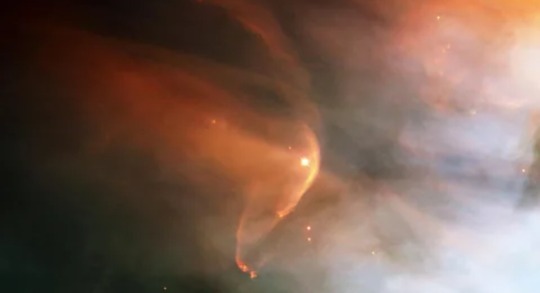
"The sun will send out a pulse … and then we passively wait for a return signal from the outer heliosphere, and we use that time delay to determine where the outer heliosphere must be," Reisenfeld explained.
As the sun circles the outer rim of the Milky Way, the solar wind keeps cosmic radiation at bay, forming a protective bubble. This is good for us, since "that radiation can damage spacecraft and it can be a health hazard for astronauts," Reisenfeld said.
Originally published on www.livescience.com
COMING UP!!
(Saturday, March 16th, 2024)
"WHAT IF WE ARE TRULY ALONE IN THIS UNIVERSE??"
#astronomy#outer space#alternate universe#astrophysics#universe#spacecraft#white universe#space#parallel universe#astrophotography
68 notes
·
View notes
Text

Wassily Kandinsky Kochel: Waterfall I (1900) oil on canvasboard 32.5 x 23.5 cm --- Ex-Magician - Lawrence Magnuson 1 waterfalls will stay girl in a daisy dress dances for her mistress 2 elephant, lion, ibex, fox don't memorize their motions climb instead the city walls above the miring mud let the rain wash your blood into nothingness from her high bridge she exposes to you a tattoo on her gentle rib cage a dead bird fallen near her heart roaring waterfalls begin to sing: she’s wondrous, wondrous, wondrous and now they'll ever sing this way again 3 poets thumb-worn come backgammon, black dice, broken mosaics rough piles of unpolished Ptolemaic tiles ritual of bricks and the returning dead --lush hydrangeas tattoos of black, black feathers flesh quills smallness and vistas love, death the poet himself his dancing girls, his golden bridges all their musical instruments amassed to express her, waking in the empty room near a great dead fountain hands opened dancing her summons the very last memory of wind
50 notes
·
View notes
Text
Draconequus!Au
Kiku - on the right is the horn of a sika deer, on the left is the horn of a Japanese serow. Right wing of a green pheasant, left wing of a Japanese emperor butterfly. Right front paw of a fox, left front paw of a cat, right back paw of a dog(Shiba inu), left back paw of a raccoon dog.
Feliciano - right horn of a mouflon, left horn of a chamois. The right wing of an Italian sparrow, the left wing of a golden eagle. The right front paw of a wolf, the left front paw of a lion. The right hind paw of a cat, the left hind leg of a donkey.
Ludwig - right horn of a ibex, left horn of a Thuringian goat. The right wing of a golden eagle, the left wing of a white stork. The right front paw of a German shepherd, the left front paw of a brown bear. The right hind leg of a Hanoverian horse, the left hind paw of a doberman.
Francis - right horn of a fallow deer, left horn of a Poitou goat. The right wing of a rooster, the left wing of a dove. The right front paw of a cat, the left front paw of a poodle. The right hind leg of a boar, the left hind paw of a fox
Arthur - right horn of a red deer, left horn of a roe deer. The right wing of a raven, the left wing of a robin. The right front paw of a owl, the left front paw of a rabbit. The right hind paw of a English bulldog, the left hind paw of a lion
Alfred - right horn of a bison, left horn of a white tailed deer. The right wing of a bald eagle, the left wing of a red tailed hawk. The right front paw of a black tailed jackrabbit, the left front paw of a wolf. The right hind leg of a pronghorn, the left hind paw of a grizzly bear
Ivan - right horn of a reindeer, left horn of a elk(alces alces). The right wing of a mute swan, the left wing of a eastern imperial eagle. The right front paw of a mountain hare, the left front paw of a polar bear. The right hind leg of a Orloff trotter, the left hind paw of a amur tiger
Yao - right horn of a Père David's deer, left horn of a Sambar deer. The right wing of a red crowned crane, the left wing of a golden pheasant. The right front paw of a panda, the left front paw of a leopard. The right hind paw of a Chinese hare, the left hind paw of a dhole
#aph#hws#hetalia#crossover#mlp#aph japan#hws japan#aph italy#aph north italy#hws italy#hws north italy#aph germany#hws germany#aph france#hws france#aph england#hws england#aph america#hws america#aph russia#hws russia#aph china#hws china
12 notes
·
View notes
Text
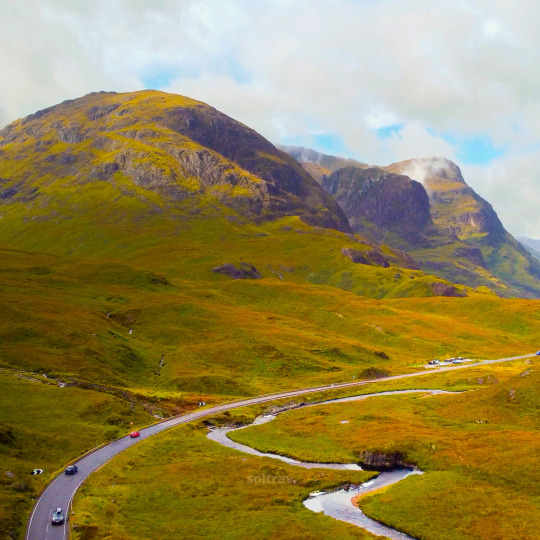
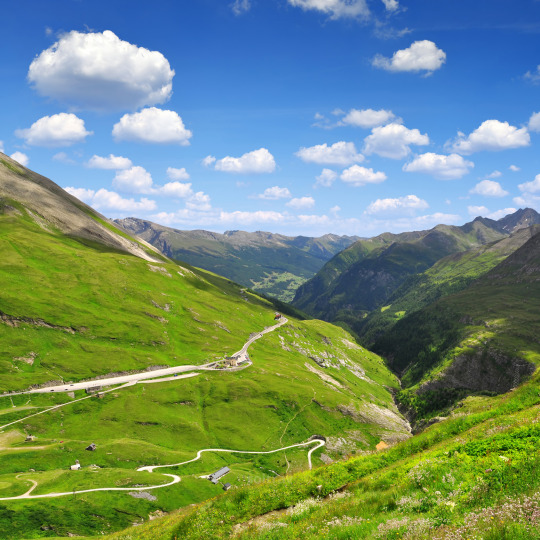
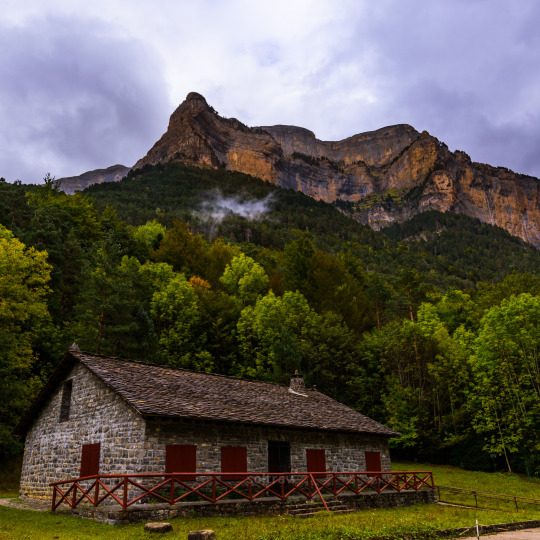
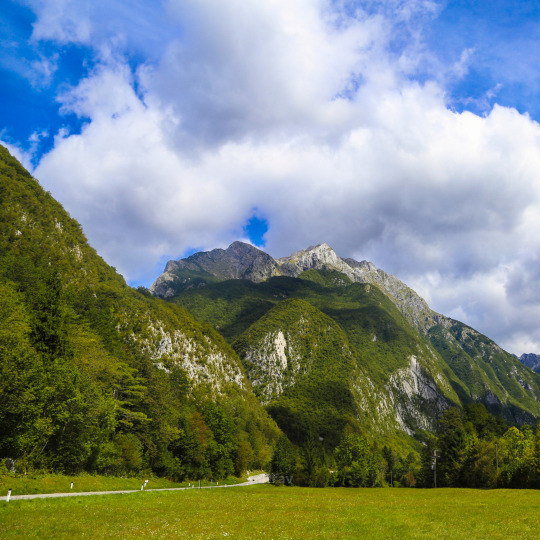
🌿 15 Off the-Beaten-Path European National Parks: Summer’s Best Kept Secrets 🌄
Tired of crowded trails and overhyped destinations? Imagine wandering through emerald valleys, glacial lakes, and ancient forests where the only sounds are your footsteps and the whisper of the wind. This summer, ditch the tourist traps and dive into Europe’s best-kept secrets—the national parks that locals wish you knew about.
Here’s a sneak peek of 4 hidden gems (🔗 full list on my website):
✨ Triglav National Park, Slovenia Slovenia’s only national park is a fairy tale of turquoise rivers, sheer Alpine cliffs, and wildflower meadows. Climb Mount Triglav for sunrise—if you’re brave enough to tackle the via ferrata!
❄️ Hohe Tauern National Park, Austria Home to Austria’s highest peak (Grossglockner!), this park is a wonderland of glaciers, waterfalls, and golden eagles. Don’t miss the Krimml Falls—Europe’s tallest cascade.
🏴 Glencoe National Nature Reserve, Scotland Moody, mystical, and steeped in legends. Hike the Lost Valley for jaw-dropping views of volcanic ridges and mist-shrouded lochs. Fun fact: This valley once hid stolen cattle from rival clans.
🇪🇸 Parque Nacional Ordesa y Monte Perdido, Spain Spain’s answer to the Grand Canyon, with dizzying limestone cliffs, hidden waterfalls, and ibex leaping across trails. A UNESCO gem in the Pyrenees!
…and 11 more magical parks are waiting on my blog! 🌍✨
👉 Click here to find the complete list on the website. (you’ll want to bookmark this for your next adventure).
Tell me in the comments: Which park would you explore first? 🗺️ Share this post if you’re ready to trade crowds for solitude this summer! 🌲
P.S. Tag a fellow wanderluster who needs these vibes in their life.
🔗 [15 Off the Beaten Path European National Parks: Summer’s Best Kept Secrets]
#nature#travel#holiday#solo travel#tourism#travel destinations#wanderlust#trip#traveling#photography#places to visit#travel blog#travelblogger#travelgram#travel photography
3 notes
·
View notes
Note
If you could wish three animals (including bugs) out of extinction, which ones would you pick?
"Hm, rats, mice, and those disgusting naked mole rats do those count as rats...because they so fucking ugly...So I just googled it and they aint....*rereads*...Oh shit...OUT of extinction...Damn I need to start wearing my glasses...I'll go with the Tasmanian tiger those things are dope looking, the sabertooth and the Turkoman...it's a type of horse"
"Hm I'd like to see the Mammoths back that big sloth thing annnddd Oh! The quagga!"
"The Baiji definitely, the Dodo and the Passenger Pigeon "
"....Ok....so...from the sound of it...no dinos....here me out we just bring back the triceratops....the Stellar Sea Cow and OH the Pinta Giant Tortoise "
"I'm willing the fuck the world over and do Jurassic park...But I guess I'd pick, the Irish Elk...Elk in general to me are cool looking...the western black rhino because man we've done Rhinos dirty...and the Golden Toad"
."I really like birds and I'd wanna bring back the Carolina Parakeet, The Cuban Macaw and the Dodo".
"...Hmmm thats tough....But I'd wanna bring back the Mammoths, The Laughing Owl, and the Pyrenean Ibex"
"...Hm...I suppose I would bring back the Moa, the Great Auk, and the Caribbean Monk Seal...I've seen the Hawaiian Monk Seal while on vacation...hm...sad that these creatures are no longer around"
3 notes
·
View notes